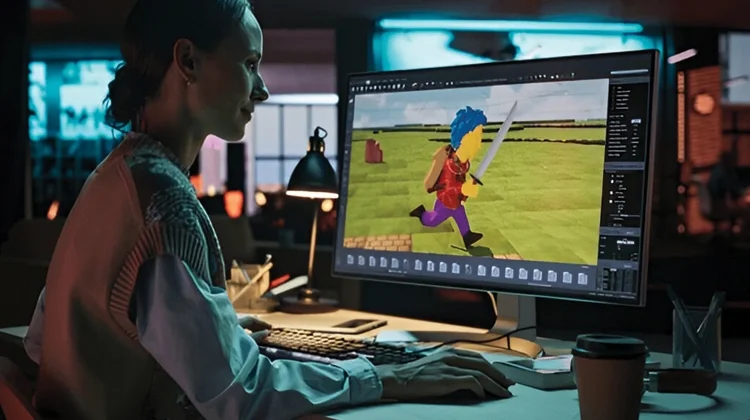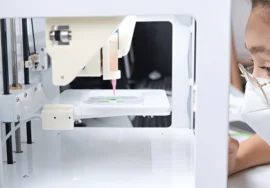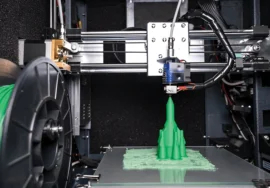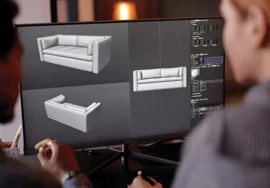
Choosing the Right Visual Format for Your Marketing Campaign
In today’s fast-paced digital world, visual content has become an indispensable tool for marketing and communication. The ability to capture attention, convey messages, and create lasting impressions is crucial for businesses to succeed. For visual content, two popular formats stand out: 3D animation and traditional video. Both offer unique advantages and cater to different needs. This blog post will delve into the key differences between 3D animation and video, helping you make an informed decision about which format is best suited for your marketing campaign.
Understanding 3D Animation
3D animation involves creating three-dimensional objects and characters that are brought to life through a series of digital frames. These frames are then joined to create a seamless animation sequence. 3D animation offers a high level of control over the visual elements, allowing for intricate details, realistic movements, and dynamic camera angles. This format is well-suited to:
- Product demonstrations: 3D animation can showcase product features, functionality, and benefits.
- Explainer videos: Complex concepts can be simplified and made easier to understand through 3D animation, which can give a clear and concise explanation.
- Brand storytelling: 3D animation allows the creation of immersive and imaginative worlds that can enhance brand storytelling and emotional connection.
- Gaming and entertainment: 3D animation is a cornerstone of the gaming and entertainment industry, creating stunning visuals and immersive experiences.
Key Advantages of 3D Animation
- Flexibility: 3D animation offers high flexibility, allowing for changes and adjustments to be made throughout the production process.
- Control: You have complete control over every aspect of the animation, from character design and camera angles to lighting and sound effects.
- Realism: 3D animation can create realistic visuals, making it ideal for product demonstrations and educational content.
- Imagination: It allows for the creation of imaginative and fantastical worlds that can capture attention and evoke emotions.
Understanding Traditional Video
Traditional video involves capturing live-action footage using cameras. This format is used for various purposes, including:
- Product commercials: Traditional video is a popular choice for creating engaging commercials that showcase products in real-world scenarios.
- Customer testimonials: Videos featuring customer testimonials can build trust and credibility for your brand.
- Behind-the-scenes footage: Giving viewers a glimpse into your company’s operations can foster a sense of connection and transparency.
- Event coverage: Traditional video is essential for capturing and documenting important events and milestones.
Key Advantages of Traditional Video
- Authenticity: Traditional video provides a sense of authenticity and realism that can be difficult to replicate with animation.
- Relatability: Live-action footage is often more relatable to viewers, as they can see real people and real-world settings.
- Spontaneity: Traditional video can capture spontaneous moments and unexpected events that add a sense of authenticity.
- Budget-friendliness: Traditional video may be more cost-effective than 3D animation, especially for simpler projects.
Choosing the Right Format: Key Considerations
When deciding between 3D animation and traditional video, several factors should be taken into account:
- Message and audience: Consider the message you want to convey and the target audience you are trying to reach. Does your message require a high level of visual complexity, or would a more straightforward approach be sufficient?
- Budget: 3D animation can be more expensive than traditional video, so it’s important to consider your budget constraints.
- Production timeline: 3D animation can be time-consuming, so if you have a tight deadline, traditional video may be a better option.
- Desired tone and style: Think about the tone and style you want to achieve with your visual content. Do you want something playful and imaginative, or something more serious and informative?
Combining 3D Animation and Traditional Video
In many cases, combining 3D animation and traditional video can create a more engaging and effective marketing campaign. For example, you could use 3D animation to explain complex concepts and then transition to live-action footage to showcase real-world applications.
3D Animation vs. Video: A Comparative Analysis
To provide a more comprehensive understanding of the differences between 3D animation and traditional video, let’s delve deeper into specific aspects of each format:
Production Time and Cost
- 3D Animation:
- Time-consuming: Creating 3D animations often requires a significant amount of time, especially for complex scenes or characters.
- Costly: The production costs can be higher due to the specialized software, hardware, and skilled professionals needed for 3D modeling, animation, and rendering.
- Traditional Video:
- Faster: Traditional video production can generally be completed more quickly, especially for simple projects.
- Less expensive: The costs are typically lower as it involves fewer specialized tools and equipment.
Level of Control
- 3D Animation:
- High control: You have complete control over every aspect of the animation, allowing for precise adjustments and customization.
- Flexibility: Changes can be made easily throughout the production process.
- Traditional Video:
- Limited control: While you can control camera angles, lighting, and sound, there is less flexibility to alter elements after filming.
- Reliance on real-world constraints: You are limited by the physical world, which can sometimes be challenging.
Visual Quality
- 3D Animation:
- High quality: 3D animation can produce stunning visuals with realistic details, complex lighting, and dynamic camera movements.
- Photo-realism: It can achieve a level of photo-realism that is often indistinguishable from live-action footage.
- Traditional Video:
- Dependent on factors: The visual quality of traditional video depends on factors such as camera equipment, lighting conditions, and editing techniques.
- Limited by physical constraints: Real-world limitations can sometimes affect the visual quality.
Target Audience
- 3D Animation:
- Broad appeal: 3D animation can appeal to a wide range of audiences, from children to adults.
- Educational and informative content: It is particularly effective for explaining complex concepts or demonstrating products.
- Traditional Video:
- Depends on content: The target audience for traditional video can vary depending on the content and style.
- Authenticity and relatability: It is often more effective for connecting with audiences on a personal level.
Specific Use Cases
- 3D Animation:
- Product demonstrations: Showcasing product features in a visually engaging way.
- Explainer videos: Simplifying complex concepts and making them easier to understand.
- Brand storytelling: Creating immersive and imaginative worlds to enhance brand identity.
- Gaming and entertainment: Creating visually stunning and immersive experiences.
- Traditional Video:
- Product commercials: Showcasing products in real-world scenarios.
- Customer testimonials: Building trust and credibility through authentic feedback.
- Behind-the-scenes footage: Fostering a sense of connection and transparency.
- Event coverage: Capturing and documenting important events and milestones.
Conclusion
The choice between 3D animation and traditional video ultimately depends on your specific needs and goals. By carefully considering factors such as production time, cost, level of control, visual quality, target audience, and specific use cases, you can make an informed decision that will help you create effective and engaging visual content for your marketing campaigns.





